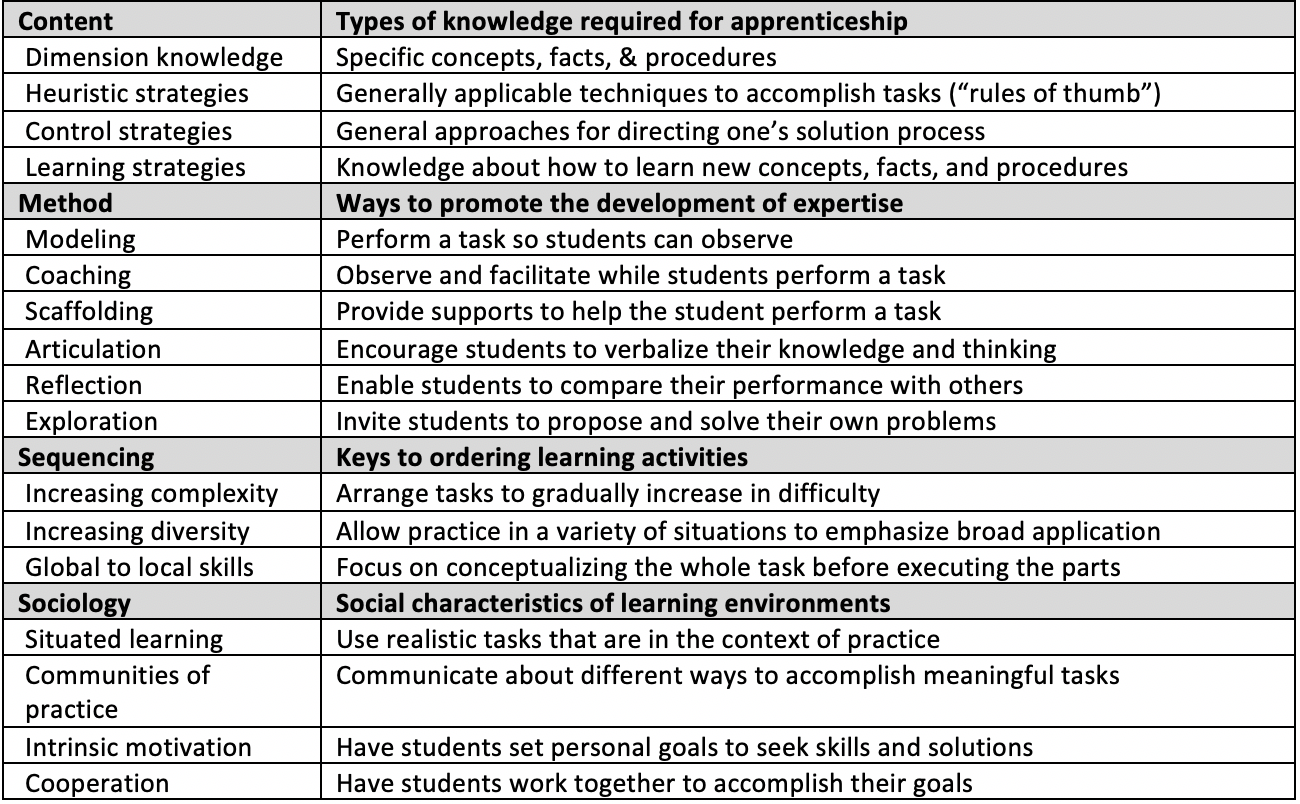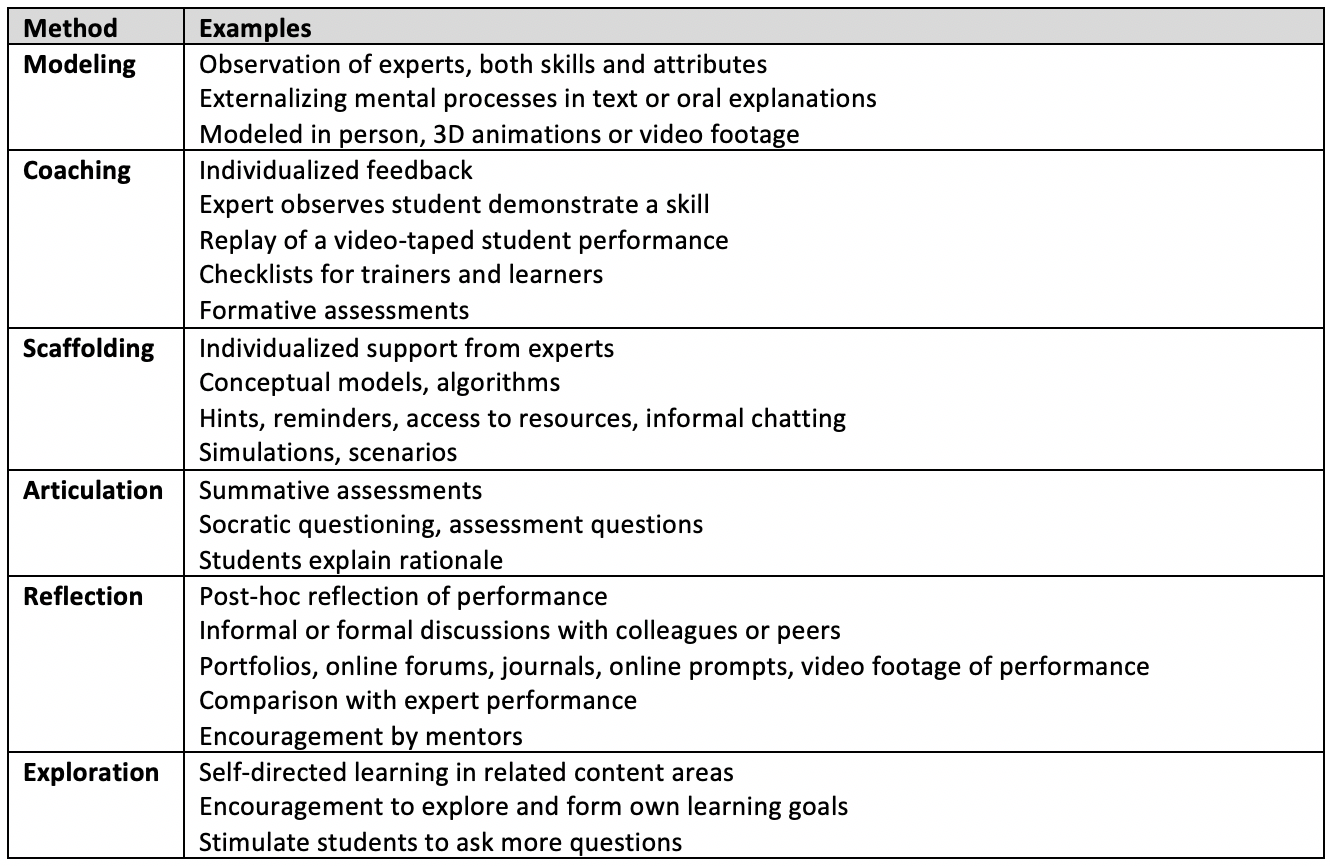Make Thinking Visible with Cognitive Apprenticeship
Michael Wolcott, PharmD, PhD, BCPS, BCIDPS
Experiential education is founded on an apprenticeship model in which a master (e.g., preceptor) teaches a skill or art to an apprentice (e.g., student). Experts may have difficulty, however, when conveying the intricacies of skills sets that have become automatic in their daily practices. The cognitive apprenticeship model is an approach that can help preceptors create a safe learning environment by identifying strategies to support learning through observation, imitation, and modeling.
The cognitive apprenticeship model consists of four domains: content, method, sequencing, and sociology. Preceptors are encouraged to consider how they engage in each of these domains to identify areas for refining their approach to experiential education. Table 1 provides a summary of the subcomponents of the four dimensions of the model and how preceptors should consider including them into their practice.
TABLE 1. Four dimensions of the cognitive apprenticeship model
Of the four domains, the methods are often the easiest to integrate as it includes a host of strategies that can directly impact educational practices. Table 2 provides a list of examples from Lyons et al (2017) that have been documented in the literature. Preceptors should aim to incorporate a mixture of these strategies across all 6 subcomponents for a balanced experience.
TABLE 2. Examples of cognitive apprenticeship methods
References & Additional Readings:
Collins A, Brown JS, Holum A. Cognitive apprenticeship: Making thinking visible. American Educator. 1991;15(3):6-11
Lyons K, McLaughlin JE, Khanova J, Roth MT. Cognitive apprenticeship in health sciences education: a qualitative review. Adv in Health Sci Educ. 2017;22(3):723-739
Woolley NN, Jarvis Y. Situated cognition and cognitive apprenticeship: A model for teaching and learning clinical skills in a technologically rich and authentic learning environment. Nurse Education Today. 2007;27(1):73-79


